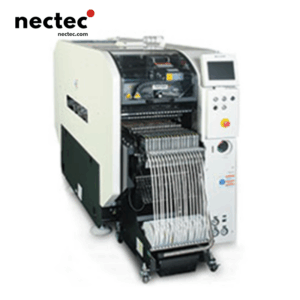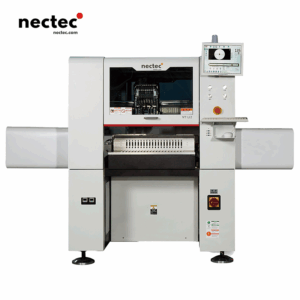In the ever-evolving landscape of electronics manufacturing, efficiency and cost-effectiveness are paramount. For small to medium-scale operations, the introduction of DIY pick and place machines has revolutionized the way producers handle their assembly lines. This blog post explores the numerous benefits that ماكينات الالتقاط والوضع اليدوي بالجملة bring to the table, how they can streamline your manufacturing processes, and why investing in one is a savvy business decision.
فهم ماكينة الالتقاط والوضع
A pick and place machine is designed to automate the process of placing electronic components onto a PCB (Printed Circuit Board). Traditionally, this task has been labor-intensive and time-consuming, but with advancements in technology, DIY kits have become a popular alternative, offering customization, affordability, and ease of use. These machines utilize suction cups or mechanical grippers to pick components from trays and precisely place them according to pre-defined layouts.
The Benefits of Using Wholesale DIY Pick and Place Machines
1. Significant Cost Savings
إحدى المزايا الأساسية لـ ماكينات الالتقاط والوضع اليدوي بالجملة is cost-efficiency. Bulk purchasing allows businesses to acquire high-quality machinery at a fraction of the price found in the retail market. For startups and small manufacturers, these savings can make a substantial difference in their operational budget.
2. Customization to Fit Your Needs
Unlike off-the-shelf machines, DIY options allow you to customize features and configurations to meet your specific production needs. Whether it’s accommodating a particular component size, enhancing speed, or integrating with additional systems, you have the ability to tailor your machine for optimal performance. Additionally, DIY kits often come with comprehensive manuals and support forums, making them accessible even for those with limited technical backgrounds.
3. Increased Productivity
Time is money, especially in manufacturing. DIY pick and place machines drastically reduce assembly time by automating repetitive tasks. This efficiency minimizes human error and accelerates production cycles, enabling businesses to scale faster and meet market demand without compromising quality.
4. سهولة الصيانة والتحديثات
Another remarkable benefit is that DIY machines are often easier to maintain and upgrade compared to their commercial counterparts. As a user, you gain insights into the machine’s operational mechanics, making troubleshooting straightforward. Various communities and manufacturers provide ongoing support and upgrades, ensuring that your machine can adapt to evolving technologies and encroaching competition.
Factors to Consider When Purchasing a DIY Pick and Place Machine
1. حجم المكوّن ونوعه
Before making a purchase, consider the types and sizes of components you’ll be placing. Different machines have varying capabilities in terms of size and handling exceptions like odd-form components. Choose a machine that meets your specifications without limiting your design flexibility.
2. توافق البرمجيات
Your pick and place machine’s software is just as crucial as its hardware. Ensure that the machine you select is compatible with your existing design software, such as Altium, Eagle, or KiCAD. Seamless integration will allow for a smoother workflow and reduce the time required to set up your production runs.
3. حجم الإنتاج
Estimate your expected production volume to determine the right specifications for your machine. Some machines are built for high-volume production while others cater to low-volume, high-mix scenarios. Selecting a machine that aligns with your production goals will ensure efficiency in manufacturing and help sustain your business’s growth.
Enhancing Your Manufacturing Strategy with DIY Machines
Integrating wholesale DIY pick and place machines into your manufacturing strategy involves more than just the initial purchase. It’s about creating an ecosystem that maximizes efficiency and productivity. Here are some innovative ways to implement and optimize these systems:
1. Training and Development
Once your machine is set up, provide adequate training for your team. Understanding how to operate the machine effectively is vital. Encouraging skill development and hands-on training sessions can foster a culture of innovation, making your production line more adaptable and resilient.
2. Feedback Loop for Improvements
Utilize feedback from operators to make iterative improvements on your setup. By creating a structured feedback loop, you can identify bottlenecks or inefficiencies and act upon them swiftly. This focus on continuous improvement leads to smarter manufacturing practices.
3. مراقبة مقاييس الأداء
Establish KPIs (Key Performance Indicators) to measure the success of your pick and place machine implementation. Metrics such as component placement accuracy, assembly speed, and downtime all play a role in evaluating operational effectiveness. Regular assessment will help you optimize processes and potentially identify the need for further automation.
احتضان مستقبل صناعة الإلكترونيات
The trend toward automation in electronics manufacturing is undeniable. The use of wholesale DIY pick and place machines positions businesses not just to survive but to thrive in an increasingly digital economy. By embracing these technologies, manufacturers can better manage resources, reduce costs, and improve product quality.
As a growing number of companies explore the advantages of transitioning to DIY solutions, the future looks bright for those willing to adapt. It’s time to rethink the traditional manufacturing approach and seize the opportunities offered by innovation and automation, ultimately leading to a more competitive edge in the global market.
The Final Word on DIY Pick and Place Machines
Embracing bulk wholesale purchasing of DIY pick and place machines can fundamentally transform how businesses approach production. The cost savings, flexibility, and increased productivity garnered through these machines allow you to stay ahead in the fast-paced electronics sector. With the right knowledge and resources, you’ll be equipped to make informed decisions that can lead to sustained success and growth in your operations.







